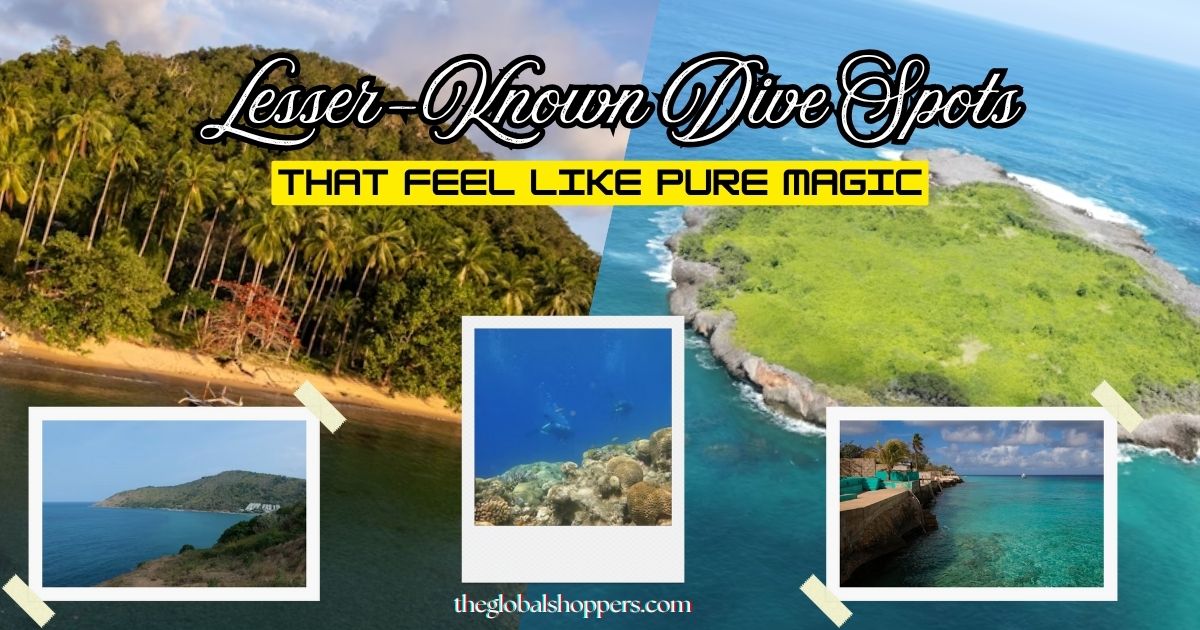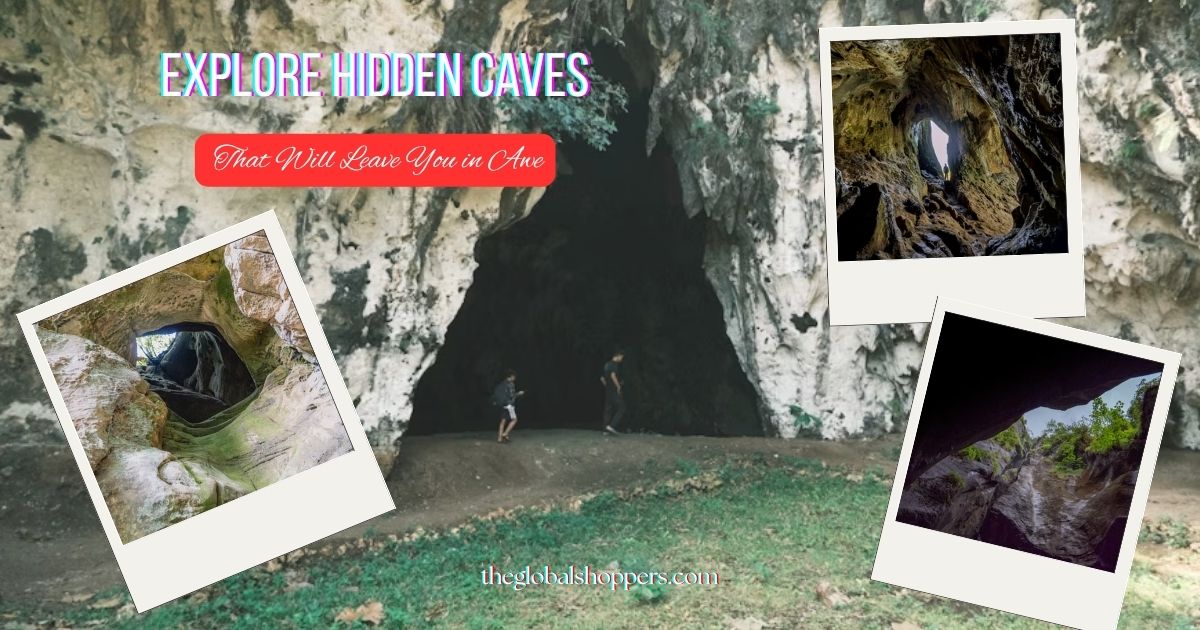For many travelers, scuba diving often brings to mind the Great Barrier Reef, the Maldives, or Palau, postcard-perfect sites that have become synonymous with underwater exploration. But beyond these well-trodden waters lies an entire world of lesser-known dive spots that are equally mesmerizing, sometimes even more so because they remain untouched by mass tourism. These destinations offer pristine coral gardens, rare marine life encounters, and a serenity that can only be found where the crowds haven’t yet arrived.
Let’s dive into some of the world’s most underrated underwater paradises, from volcanic islands and hidden lagoons to ancient shipwrecks resting in crystal-clear shallows.
1. Raja Ampat, Indonesia – The Crown Jewel That’s Still a Secret
While Indonesia is famous among divers, Raja Ampat remains relatively remote and blissfully uncrowded. Located in West Papua, this archipelago of over 1,500 islands is home to 75% of the world’s known coral species and a kaleidoscope of marine biodiversity. Imagine descending into a world where manta rays glide gracefully over coral forests, pygmy seahorses cling to sea fans, and reef sharks patrol the depths below.
Getting here is an adventure in itself, typically via Sorong followed by boat transfers, but the reward is unparalleled. Divers can explore sites like Cape Kri, known for record-setting fish counts, or Blue Magic, where schools of barracuda swirl around you in hypnotic unison. The area’s protected status ensures sustainable diving, keeping this underwater Eden thriving.
2. Tubbataha Reefs Natural Park, Philippines – The Heart of the Coral Triangle
Accessible only by liveaboard during a few months each year, Tubbataha Reefs in the Sulu Sea are a UNESCO World Heritage Site that delivers jaw-dropping dives. It’s not as famous as Palawan or Cebu, but for those in the know, it’s the crown jewel of Philippine diving.
Picture vertical walls plunging 100 meters deep, giant trevallies darting through colorful corals, and hawksbill turtles gliding past curious hammerhead sharks. Visibility can stretch up to 50 meters on a good day. Because it’s open for diving only from March to June, the reefs remain exceptionally healthy, offering a rare glimpse into marine life at its most untouched.
3. Silfra Fissure, Iceland – Dive Between Continents
If you’re after a surreal experience, the Silfra Fissure in Thingvellir National Park offers something no tropical reef can: the chance to dive between two tectonic plates, North America and Eurasia. The water, filtered through volcanic rock for decades, is so pure and clear that visibility often exceeds 100 meters.
You’ll glide through stunning geological formations, floating over electric-blue crevices formed by shifting continents. Though it’s a cold-water dive, dry suits keep you warm while you marvel at the alien-like beauty below. It’s a must for adventure seekers who crave the extraordinary.
4. Tofo, Mozambique – Manta Rays and Whale Sharks Galore
Considered one of the most exhilarating big-animal diving experiences on the planet, the so-called “Manta Coast” offers underwater encounters that feel straight out of a nature documentary. Divers can glide alongside majestic giant manta rays, come face-to-face with gentle whale sharks, and even catch the haunting songs of humpback whales during migration season. The sheer abundance of marine life here creates a sense of awe and connection to the ocean that few places can match.
The region’s nutrient-rich waters attract pelagic species throughout the year, ensuring that every dive feels alive with movement and mystery. What makes this destination truly special, though, is its untouched charm, free from heavy commercialization and overcrowded resorts. Local dive operators are deeply committed to sustainability, focusing on reef protection, responsible wildlife interaction, and marine research initiatives. For eco-conscious adventurers, it’s the perfect balance of adrenaline, serenity, and purpose beneath the waves.
5. Pemba Island, Tanzania – Zanzibar’s Wild Sister
While Zanzibar draws beach lovers and honeymooners, Pemba Island remains its mysterious, wilder sibling. Its untouched reefs are alive with massive table corals, reef sharks, and curious Napoleon wrasse. Drift dives along the Pemba Channel offer strong currents, bringing a rush of adrenaline as you soar over vertical walls covered in sponges and fans.
6. Poor Knights Islands, New Zealand – A Subtropical Surprise
Just off New Zealand’s North Island, the Poor Knights Islands combine volcanic formations with subtropical marine life, featuring sea caves, kelp forests, and underwater arches teeming with snapper and moray eels. Legendary explorer Jacques Cousteau once named this one of his top ten dive sites in the world, yet it remains underrated outside the diving community.
Divers can explore sites like Blue Maomao Arch, a cathedral-like space where sunlight filters through swirling schools of fish. The water may be chilly, but the spectacle below the surface is truly unforgettable.
7. Los Roques, Venezuela – Caribbean Serenity Without the Crowds
If you crave Caribbean blues without the chaos of cruise ships, Los Roques National Park delivers pure paradise. This remote archipelago boasts crystal-clear lagoons, shallow reefs perfect for beginners, and deep walls for advanced divers.
Despite political challenges on the mainland, Los Roques remains a safe and serene haven, with vibrant corals and abundant marine life like eagle rays and nurse sharks. Bonus: you’ll often have entire dive sites to yourself.
8. Cocos Island, Costa Rica – The Real-Life Isla Nublar
Known as the inspiration for Jurassic Park, Cocos Island lies 550 km off Costa Rica’s Pacific coast and is only accessible by liveaboard. It’s one of the best places on Earth to dive with hammerhead shark schools, white-tip reef sharks, and even the elusive whale shark.
The island’s remote location means you’ll be surrounded by nothing but the open ocean and the thrill of the unknown. Visibility and currents vary, but the sheer biomass of marine life makes every dive electrifying.
9. Lofoten Islands, Norway – Arctic Diving Adventure
You wouldn’t normally associate Arctic waters with diving bliss, but the Lofoten Islands redefine what “stunning” means underwater. Picture diving among kelp forests, colorful anemones, and shipwrecks resting in water so clear it almost glows.
In winter, you might even see the Northern Lights dancing overhead. For photographers, the combination of surreal lighting and marine life like cod, sea angels, and wolfish makes this a dream come true.
10. Bonaire, Caribbean Netherlands – The Diver’s Paradise You Haven’t Heard Enough About
Unlike most islands, where you need a boat, Bonaire offers incredible shore diving — just park, gear up, and step into the water. The island has over 80 marked dive sites, with thriving reefs mere meters from the beach.
Because the entire coastline is a protected marine park, coral health here is phenomenal. Expect sightings of frogfish, seahorses, and turtles in bathtub-warm, crystal-clear water. It’s a relaxed, DIY diving experience that even seasoned travelers find refreshing.
Practical Tips for Diving Lesser-Known Destinations
Exploring off-the-beaten-path dive spots is thrilling, but it also requires careful preparation. Start by checking seasonal conditions before you go. Many lesser-known locations experience short diving windows due to monsoon seasons, strong currents, or visibility changes. Research local weather patterns and marine life migrations to plan your trip for optimal underwater conditions, avoiding storms and enjoying clearer, calmer waters.
Next, choose eco-conscious dive operators who are committed to protecting marine environments. Look for certifications like Green Fins or PADI Eco Centers that promote sustainable practices such as limiting plastic use, avoiding coral contact, and ensuring responsible wildlife interactions. These operators often support local conservation projects, meaning your dive contributes positively to the ecosystem.
When packing, consider bringing your own essential gear if possible. Remote dive destinations may have limited or outdated rental options, so having your own mask, fins, and wetsuit ensures comfort and proper fit. It’s also wise to pack eco-friendly sunscreen and reef-safe toiletries to minimize your impact.
Don’t overlook travel insurance; it’s a must for divers venturing into isolated areas. Choose a policy that explicitly covers scuba diving up to your certification depth, as well as emergency evacuation in case of decompression sickness or other dive-related issues. Remote dive sites often lack nearby medical facilities, making proper coverage a literal lifesaver.
Finally, respect local culture and ecosystems. Many small coastal or island communities rely heavily on sustainable tourism, and showing cultural sensitivity goes a long way. Learn a few local phrases, support small businesses, and follow the golden rule of diving: leave only bubbles, take only photos. By treading lightly, you help ensure these hidden underwater gems remain pristine for future adventurers.
Where Adventure Meets Serenity
Exploring lesser-known diving destinations isn’t just about escaping the crowds; it’s about reconnecting with the true spirit of adventure. These remote underwater worlds offer a glimpse into the untouched corners of our planet, where nature thrives undisturbed and every dive feels like a personal discovery. Away from the noise of tourist hubs, you’ll find yourself surrounded by silence, serenity, and the raw beauty of the ocean, a humbling reminder of how vast and alive our planet truly is.
These places remind us that travel, at its best, isn’t measured by luxury or convenience but by connection to nature, to local communities, and to ourselves. Beneath the surface, vibrant coral gardens and mysterious wrecks tell stories millions of years in the making, inviting divers to explore with curiosity and respect. The ocean still holds secrets waiting to be unveiled, and it’s in these hidden depths that we rediscover why we fell in love with exploring in the first place, a sense of wonder that never fades.








